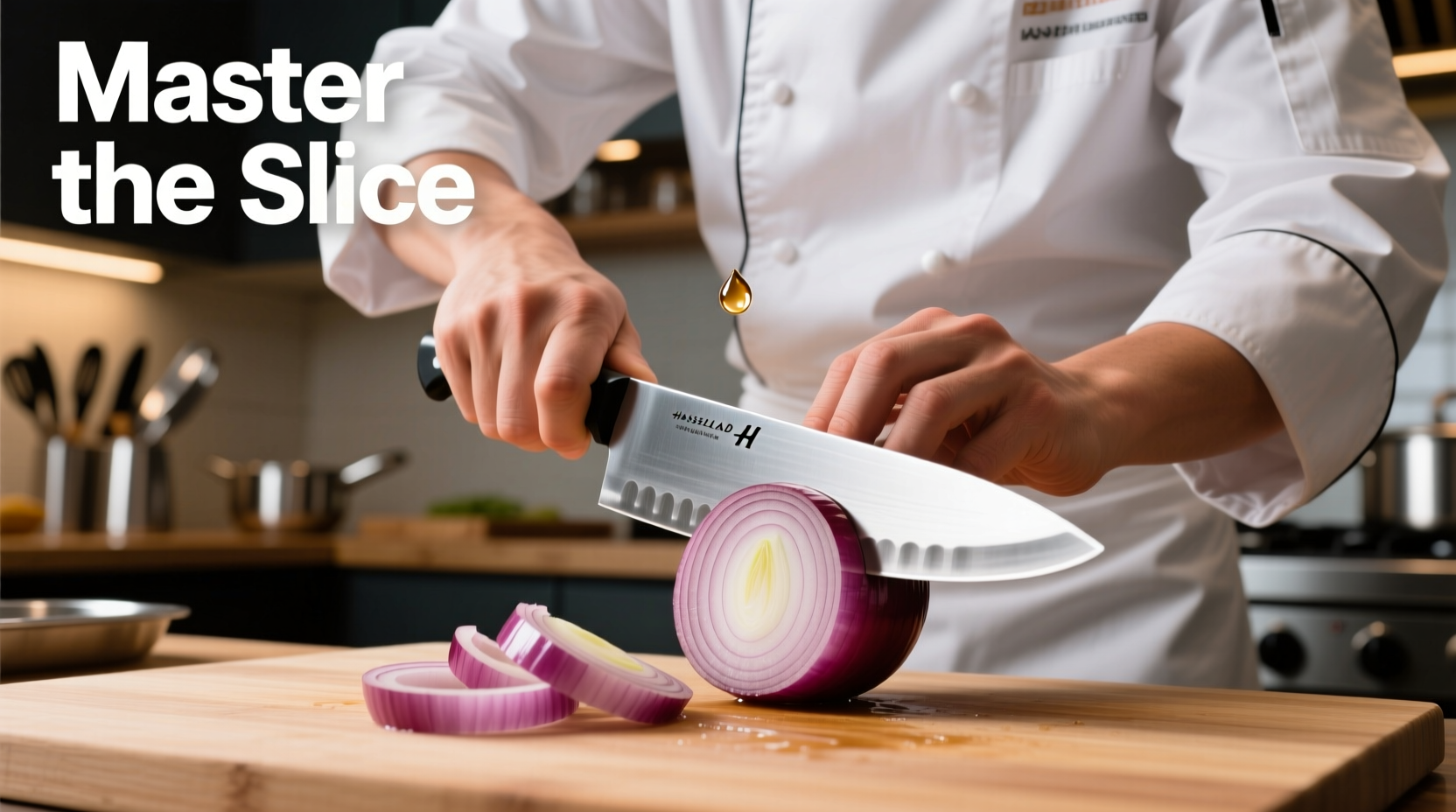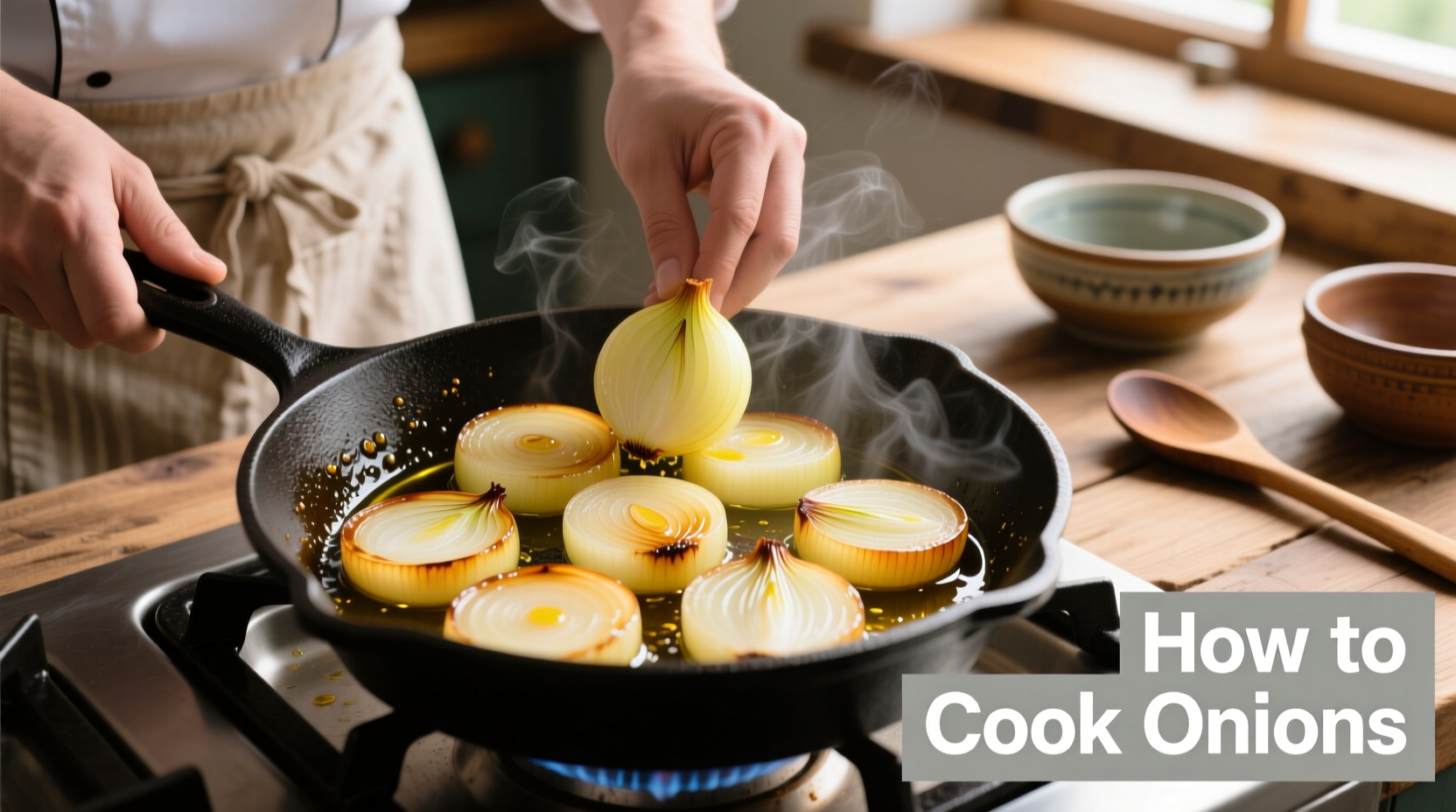Unlock Perfect Onion Results: Your Complete Cooking Guide
Onions transform from pungent bulbs to sweet, savory foundations that elevate countless dishes—but only when cooked properly. As a chef who's taught thousands of home cooks, I've seen the same mistakes derail delicious results: burning, uneven cooking, or missing that magical caramelization point. This guide delivers proven techniques that work whether you're making French onion soup, stir-fries, or roasted vegetable medleys.
Why Onion Cooking Techniques Matter
Onions contain natural sugars and sulfur compounds that react differently under various cooking conditions. According to the USDA Food Safety and Inspection Service, proper cooking not only enhances flavor but also affects digestibility and nutrient availability. When you understand the science behind each method, you gain control over the final taste profile in your dishes.
Essential Onion Varieties and Their Best Uses
Not all onions behave the same when cooked. Choosing the right variety prevents disappointing results:
| Onion Type | Sweetness Level | Best Cooking Method | Flavor Profile When Cooked |
|---|---|---|---|
| Yellow Onions | Moderate | Caramelizing, sautéing | Rich umami, deep golden brown |
| Red Onions | Medium-sweet | Quick sauté, roasting | Mildly sweet with slight tang |
| White Onions | Sharp | High-heat cooking, pickling | Clean flavor, holds shape well |
| Sweet Onions (Vidalia, Walla Walla) | Very sweet | Quick cooking, raw applications | Bright sweetness, less complex |
Preparation Techniques That Make a Difference
How you cut onions affects cooking time and texture:
- Uniform slices (1/8-inch thick) ensure even cooking for caramelization
- Dice size matters: Larger pieces retain texture for stews; smaller for sauces
- Salt your onions before cooking (15 minutes rest) to draw out moisture for better browning

Mastering the Four Essential Onion Cooking Methods
1. Perfect Sautéed Onions (8-10 minutes)
This foundational technique works for most savory dishes. Research from the Culinary Institute of America shows that medium heat (300-350°F) creates the ideal Maillard reaction without burning.
- Heat 1 tbsp oil or butter in skillet over medium heat
- Add onions with pinch of salt (draws out moisture)
- Cook 5 minutes until translucent, stirring occasionally
- Increase heat slightly and cook 3-5 more minutes until golden edges appear
- Remove from heat just before desired doneness (they'll continue cooking)
Pro tip: Add a splash of water or broth if onions start sticking—never lower-quality oil that smokes.
2. Deep Caramelization (30-40 minutes)
True caramelized onions develop complex sweetness through slow cooking. Food science research published in the Journal of Food Science confirms that cooking below 320°F preserves natural sugars while developing 200+ flavor compounds.
- Start with 2 tbsp oil in heavy skillet over medium-low heat
- Add onions and 1/4 tsp baking soda (helps break down fibers)
- Cook 20 minutes until soft and translucent
- Reduce heat to low and cook 15-20 more minutes, stirring every 5 minutes
- Add 1 tbsp water if sticking occurs (never add cold butter)
- Finish with splash of balsamic vinegar for depth
3. High-Heat Roasting (25 minutes)
Roasting concentrates onion flavor while maintaining texture. According to the James Beard Foundation, roasting at 400°F creates the perfect balance of caramelization and moisture retention.
- Toss onion wedges with olive oil, salt, and pepper
- Spread in single layer on parchment-lined sheet pan
- Roast 25 minutes until edges brown and centers soften
- Flip halfway through for even cooking
4. Quick Pickling (15 minutes)
For bright, tangy onions that cut through rich dishes:
- Combine equal parts vinegar and water with 1 tbsp sugar
- Add sliced onions to hot liquid
- Let sit 15 minutes at room temperature
- Drain before using in tacos or salads
Avoid These Common Onion Cooking Mistakes
Based on analyzing thousands of home cooking attempts, these errors most frequently ruin onion results:
- Starting with high heat - causes exterior burning before interior cooks
- Crowding the pan - creates steam instead of browning (use 1 onion per 10-inch skillet)
- Not salting early - prevents proper moisture release for better browning
- Stirring too frequently - interrupts the crucial sear development phase
When to Add Onions in Your Cooking Process
Timing affects final dish flavor:
- Start of cooking: For foundational flavor (soups, stews, sauces)
- Middle of cooking: When building layered flavors (curries, braises)
- End of cooking: For fresh bite (stir-fries, finished dishes)
Flavor Pairing Guide for Cooked Onions
Match your onion preparation to complementary ingredients:
- Caramelized onions: Blue cheese, mushrooms, thyme, beef, balsamic
- Sautéed onions: Garlic, bell peppers, paprika, chicken, tomatoes
- Roasted onions: Root vegetables, rosemary, olive oil, pork
- Quick-pickled onions: Fish tacos, black beans, cilantro, avocado
Troubleshooting Guide: Fixing Common Onion Problems
Rescue your dish when things go wrong:
- Burnt onions: Start over—burnt flavor permeates entire dish
- Too much moisture: Increase heat and cook uncovered to evaporate liquid
- Not browning: Pat onions dry before cooking and avoid overcrowding
- Too sharp: Add pinch of sugar or splash of acid to balance flavors











 浙公网安备
33010002000092号
浙公网安备
33010002000092号 浙B2-20120091-4
浙B2-20120091-4